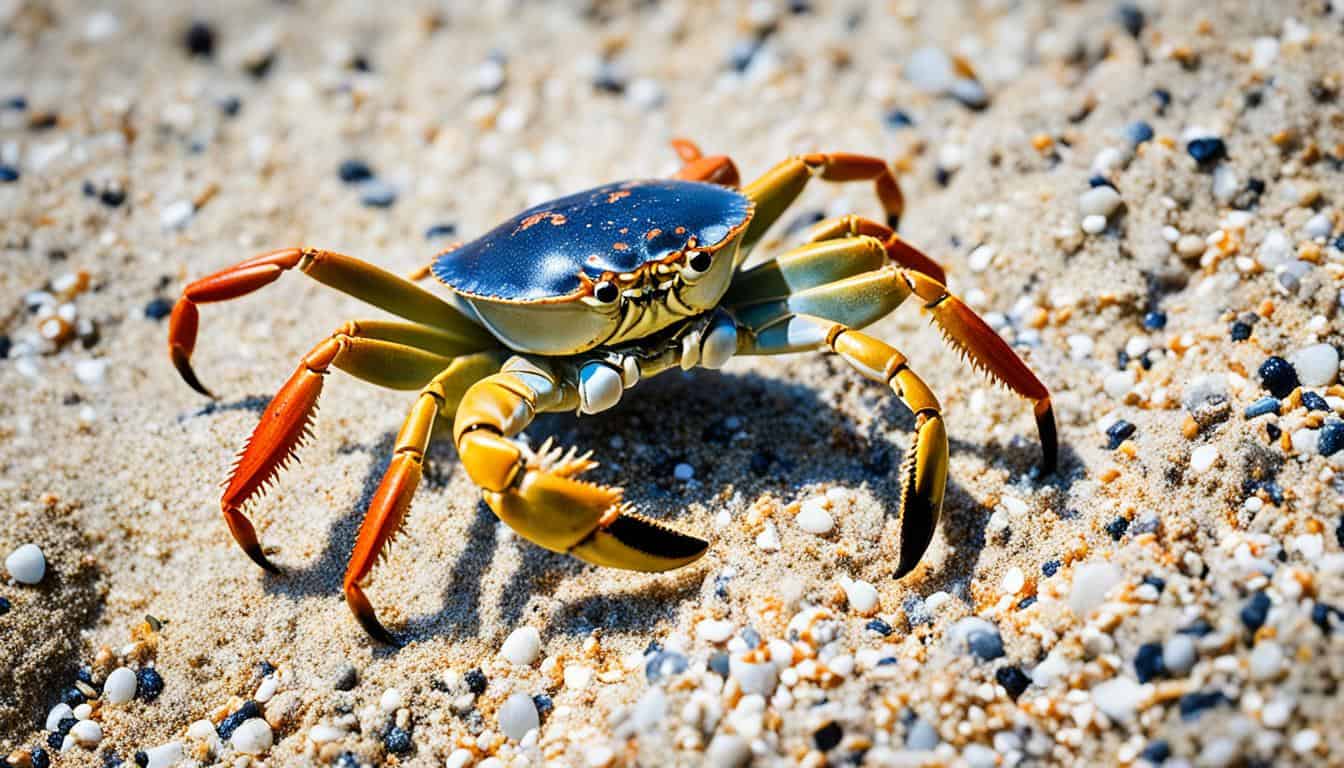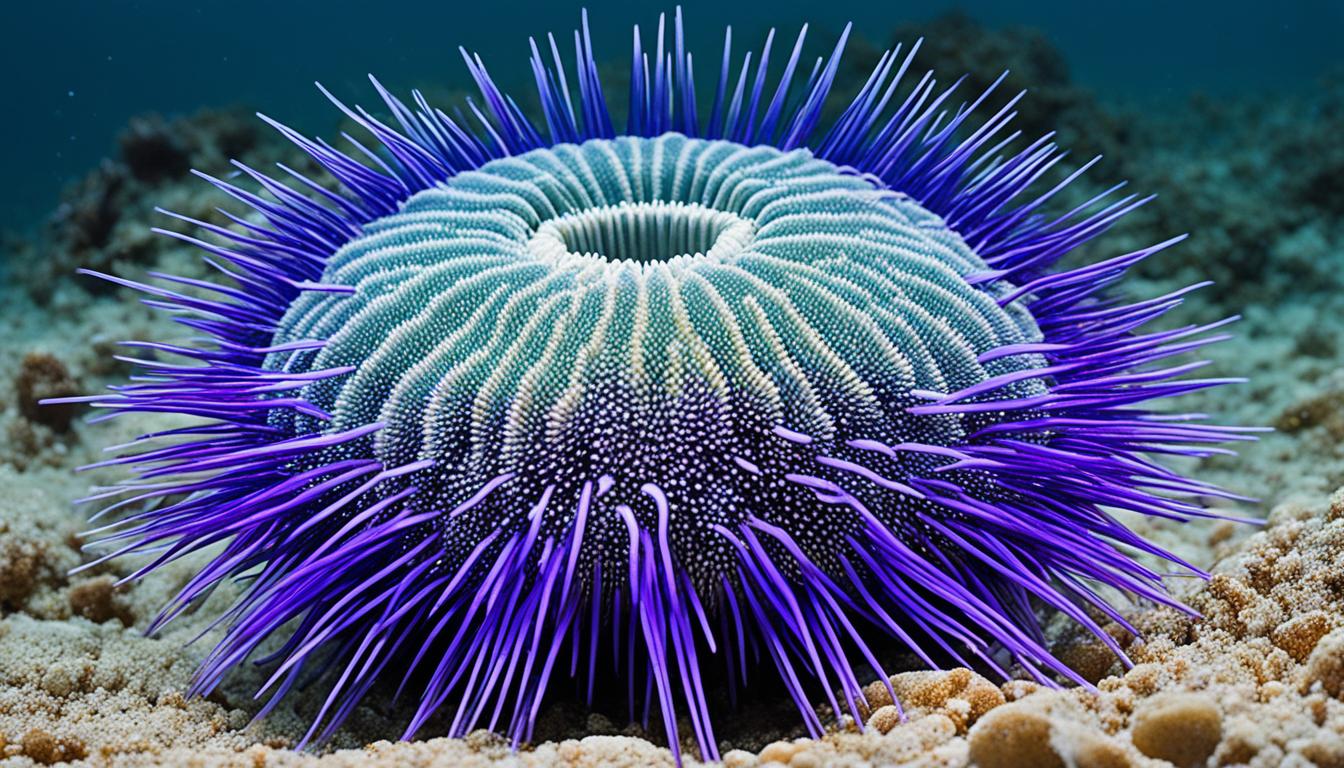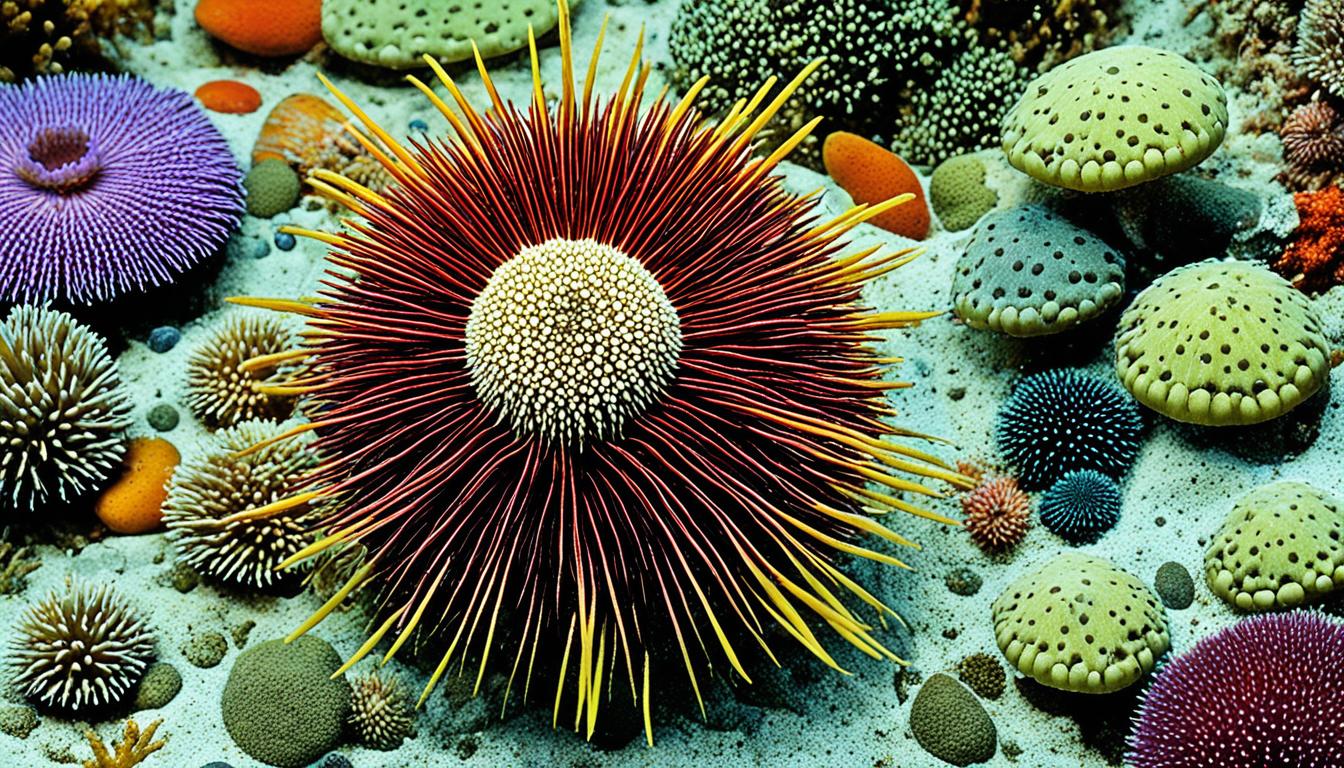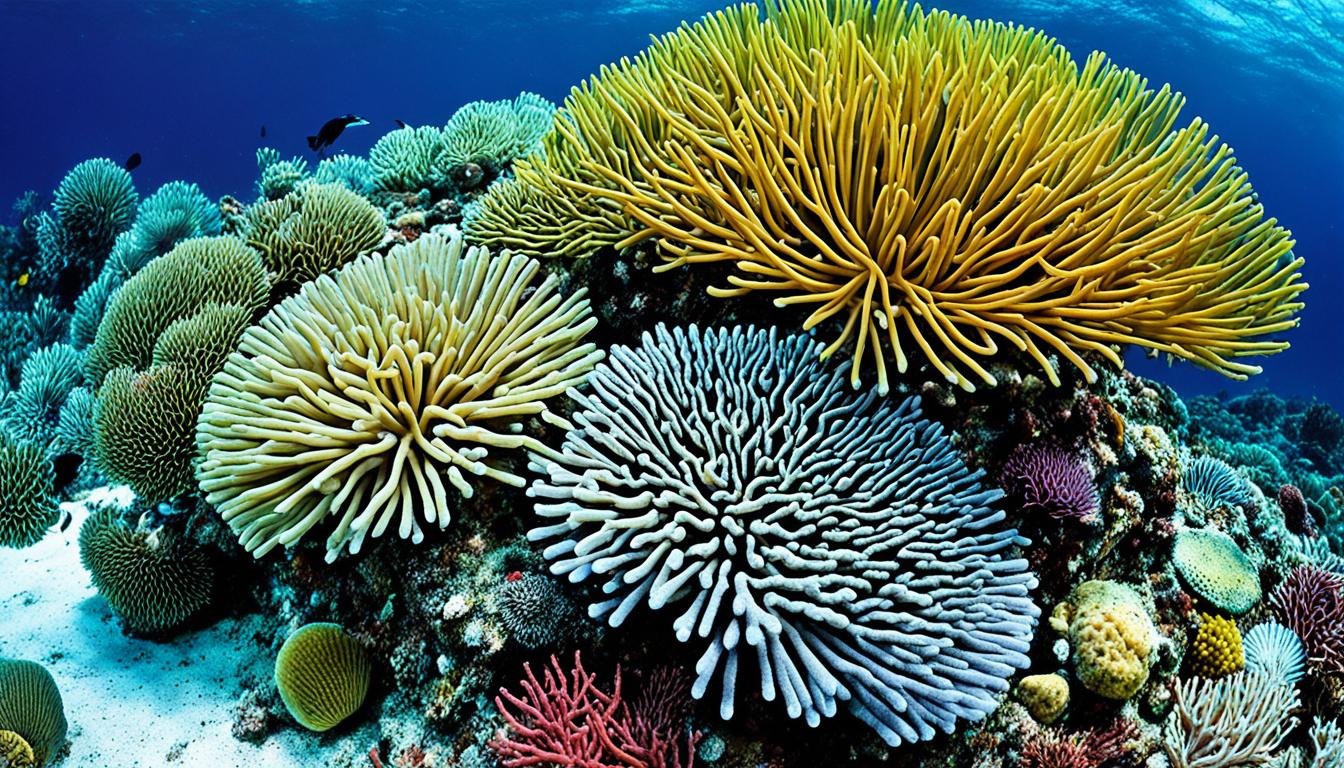Crabs, with about 5,000 species worldwide, show how well they can live in different places. You might ask, how do crabs adapt to their environment? They move from water to land, showing how they change to survive. This change includes both body changes and new behaviors that help them live.
Their ability to adapt shows how diverse they are, with each species having its own way to survive. This diversity shows the many ways crabs can live in different places.
Understanding Crab Adaptation
Crabs have amazing ways to live in different places. They have special traits that help them survive in many environments. These traits include both physical features and behaviors that help them face challenges.
Defining Adaptations in Crabs
Crabs have changed over time to better survive. They have made physical changes and learned new behaviors. These changes help them live in many places.
For example, their hard shells protect them and help them move. These traits show how crabs can adapt to their homes.
Different Types of Adaptations
Crabs have two main kinds of adaptations: physical and behavioral. Physical adaptations include:
- Exoskeletons: These give them support and protect them from predators.
- Specialized Limbs: Like claws that help them eat and defend themselves.
Behavioral adaptations are also key for crabs. They let them change how they act in different situations:
- Burrowing: They dig to hide from predators and change their surroundings.
- Feeding Habits: They change what they eat based on what’s available.
- Salinity Adjustment: They can live in different salt levels in the water.
Learning about these strategies shows how crabs not just survive but thrive. Their ability to change and use their traits shows their deep evolutionary history.
How do crabs adapt to their environment?
Crabs have amazing ways to survive in different places. They use both physical traits and behaviors to stay alive. These help them face many challenges.
Physical Adaptations for Survival
The physical adaptations in crabs are key to their survival. They have a hard outer shell, or carapace, that protects their organs. This shell also helps them move and attach muscles.
Crabs have special claws for catching food and defending themselves. These claws are also used in mating rituals. Some crabs can live in salty or fresh water, showing how they adapt to their surroundings.
Behavioral Adaptations
Behavioral adaptations in crabs help them live in their habitats. They dig burrows for safety and to keep their eggs safe. This helps them have successful reproduction.
Crabs have different ways to find food based on what’s available. Some use smells to find their next meal. This shows how smart and adaptable they are in changing environments.
| Adaptation Type | Description | Examples |
|---|---|---|
| Physical Adaptations | Structures aiding survival and mobility | Hard carapace, specialized claws |
| Behavioral Adaptations | Actions taken to enhance survival chances | Burrowing, chemical cue usage |
| Environmental Adaptation | Ability to thrive in varied conditions | Tolerance to salinity changes |
The Role of Exoskeletons in Crab Survival
The exoskeleton is key to a crab’s survival. It offers protection and support. The hard outer layer, especially the carapace, does more than just shield. It’s vital for the crab’s life.
Functionality of the Carapace
The carapace has many important roles for a crab:
- It provides physical support for the body.
- It has muscle attachment points for movement.
- It shields internal organs from harm.
- It helps keep crabs hydrated in different environments.
Protection from Predators
Crabs use their exoskeletons to defend against predators. This includes:
- The tough, hard carapace that deters predators.
- Color patterns that help them blend in.
- Behavioral adaptations for better evasion.
- The ability to regrow lost limbs as an extra defense.

Specialized Body Parts and Their Functions
Crabs have special body parts that help them adapt and survive. Their claws and unique breathing systems are key to their success. These features let them interact with their world, find food, and live in different places.
Importance of Chelipeds (Claws)
Crab claws are very important. They help crabs catch food, protect themselves, and show off in courtship. Each crab has two claws that can be different sizes and shapes. This lets them use them for various tasks.
The claws have sharp edges and special shapes. This helps crabs adjust their eating habits and deal with challenges in their environment.
Unique Respiratory Adaptations
Crabs have amazing ways to breathe that let them live in water and on land. They have gills under their shells to breathe underwater. Some crabs have even more special features for breathing on land.
True land crabs have lungs-like structures. This lets them breathe air and keep their bodies moist. This shows how crabs have evolved to meet their oxygen needs in different places.










